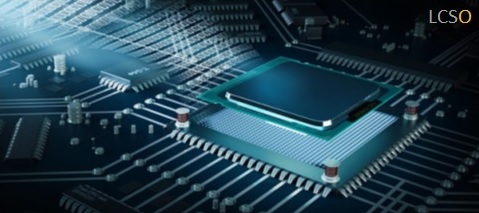
Instruction Set Architecture
Computer Architecture And Organization
What Is Instruction Set Architecture ?
The instruction set architecture ( ISA ) is a part of the processor architecture. The ISA is defined as entire group of commands implemented into the processor’s microarchitecture. The ISA works an interface between the hardware and software. The ISA defines the set of commands that the processor can perform to execute the program instructions.
The instruction set architecture is defined as group of commands and operations used by the software to communicate with the hardware. These commands are implemented into the processor circuitry that is microarchitecture.
Therefore, the instruction set architecture is said to be a hardware implementation of the group of commands into the processor microarchitecture.
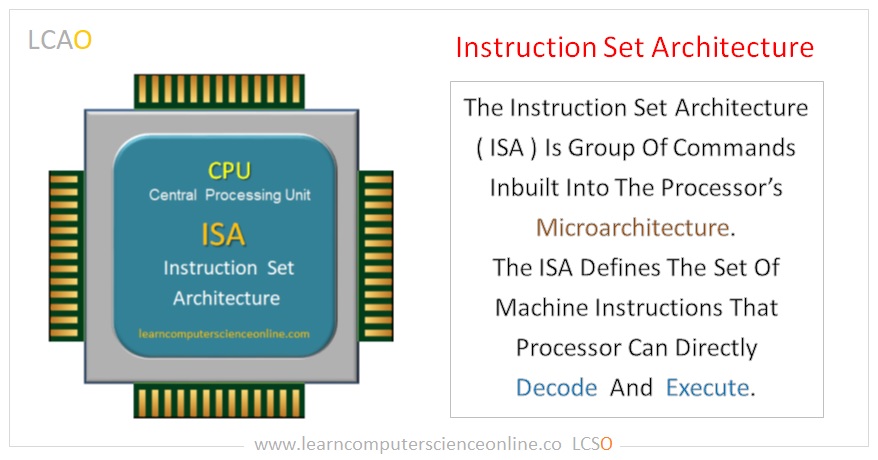
An Instruction Set Architecture (ISA) is part of the abstract model of a computer that defines how the CPU is instructed and controlled by the software. The ISA acts as an interface between the hardware and the software. It specifies operational capability as well as how CPU performs various supported operations.
The ISA provides an interface through which a programmer can interact with the hardware. It can be viewed as a programmer’s manual because it defines the operations supported by the processor. Therefore, ISA is an important reference manual for the assembly language programmer, the compiler writer, and the application programmer.
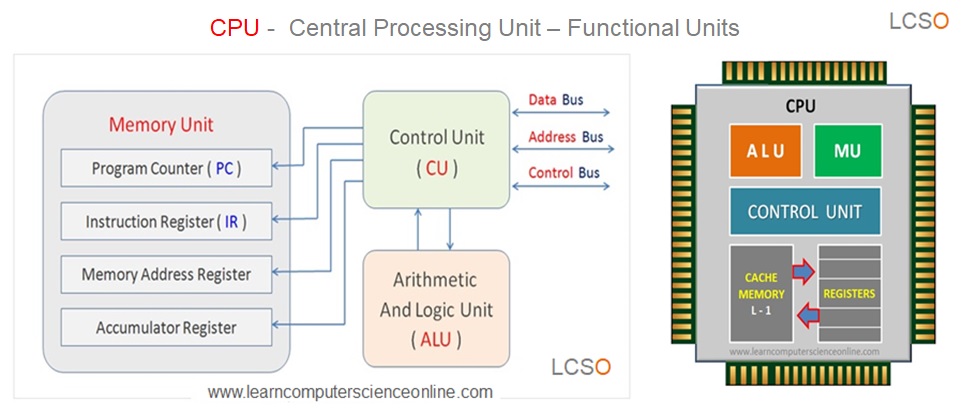
The ISA also defines the supported data types, the registers, primary and secondary memory management by the operating system. It also defines key features such as virtual memory, operations supported by the microprocessor, instruction formats supported.
The ISA can be modified to extend the operational capability of the CPU by adding instructions in terms of other operations, or by adding support for instruction formats, larger addresses and data values.
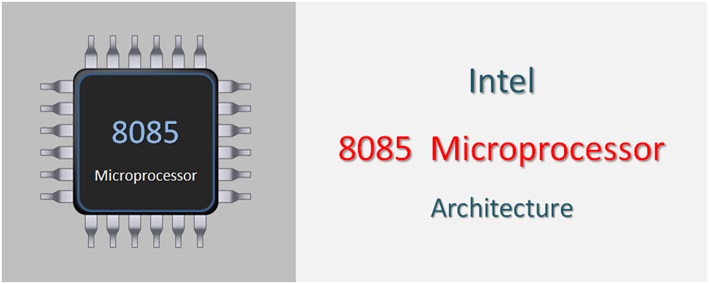
The term instruction set architecture generally refers to the family of microprocessor or more specifically the generation of the processor.
Both Intel and AMD have launched multiple processors that belongs to the same respective generation. Each processor generation or family will have similar microarchitecture.
For example, all the Intel processor chips that belongs to 11the generations will be based on the same instruction set architecture and the similar microarchitecture.
ISA Video Tutorial
Instruction Set Architecture ( ISA )
The instruction set architecture defines the capability of the processor in terms of set of specific operations. The ISA defines the basic operations that processor can execute after decoding the program instructions.
The computer program is group of instructions which directs the microprocessor to perform the various operations. However, due to computer architecture, high-level programs are compiled to translate into the low-level binary machine instructions that the CPU can execute.
Importance Of Instruction Set Architecture ( ISA )
The ISA forms the foundation of microprocessor design and enables the development of software that can run efficiently and reliably on different microprocessor implementations. It establishes a standard interface, promotes compatibility, and facilitates optimization efforts to achieve better performance and power efficiency in modern computing systems.
The Instruction Set Architecture (ISA) plays a crucial role in microprocessors for several reasons:
1. Defining The Compatibility And Portability
The ISA provides a standard interface between the hardware and software. It ensures that software written for a particular ISA can run on any microprocessor that implements that ISA. This compatibility allows software developers to write applications that can be executed on a wide range of microprocessors without requiring significant modifications or recompilation.
2. Software Development
The ISA defines the microprocessor in terms of support to specified machine instructions, data types, instruction formats and other critical formats related to processor capabilities. It is compiler that translates high level programs into low level machine instructions that CPU can decode and execute.
The ISA defines the available instructions, addressing modes, and data types that programmers can use to write software. It provides a high-level abstraction of the underlying hardware, allowing developers to focus on writing efficient and optimized code without needing to understand the intricacies of the microprocessor’s internal design.
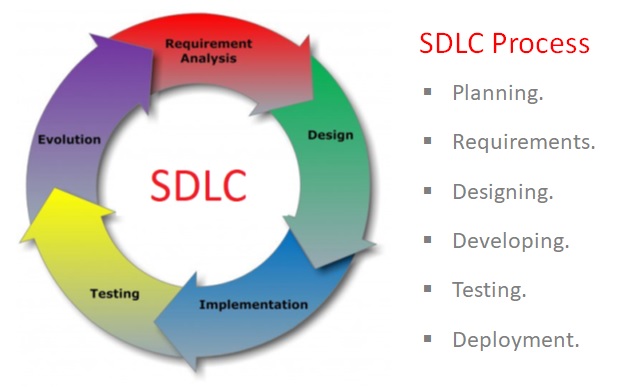
3. Performance Optimization
The ISA influences the performance of the microprocessor. The selection and design of instructions impact the execution speed, code density, and efficiency of the processor. By carefully designing the ISA, microprocessor architects can optimize instruction execution and memory access, leading to better performance in terms of speed and power consumption.
4. Compiler Design
Compilers translate high-level programming languages into machine instructions that is a code that can be executed by the microprocessor. The ISA defines the instruction set that compilers target. By understanding the ISA, compiler designers can develop optimization techniques and code generation strategies that exploit the microprocessor’s features, improving the performance of the generated code.
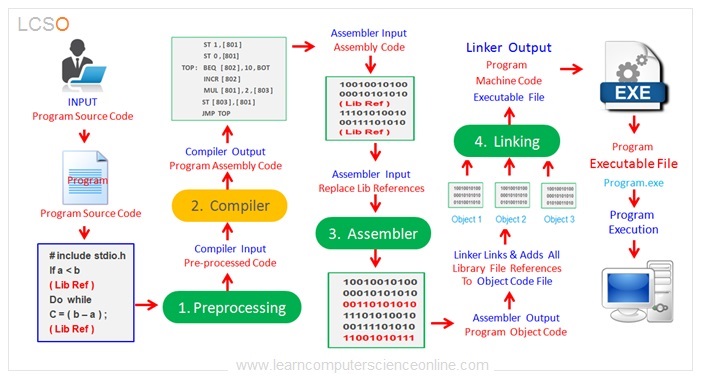
5. Hardware Design
The ISA serves as a blueprint for microprocessor designers to implement the hardware architecture. It specifies the registers, memory organization, instruction formats, and other key aspects of the microprocessor’s design. Hardware designers use the ISA as a reference to ensure compatibility, develop efficient pipelining and caching strategies, and optimize the microarchitecture for improved performance and power efficiency.
6. Ecosystem And Software Libraries
A well-defined ISA encourages the development of a software ecosystem and libraries specific to that architecture. By supporting a wide range of software, an ISA can foster the creation of diverse applications, tools, and frameworks that enhance the capabilities of the microprocessor.
ISA Example
8085 Instruction Set
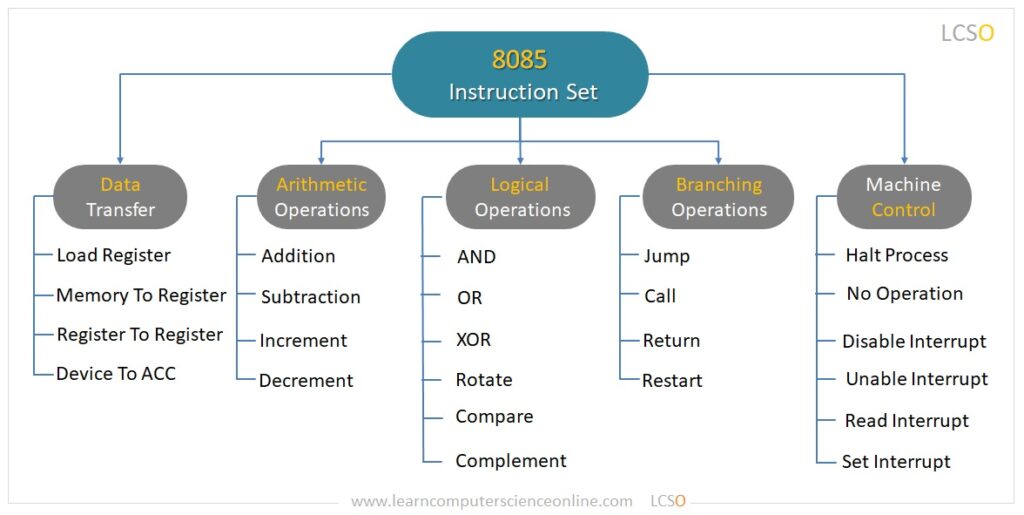
The machine instructions are encoded into binary format. The processor can directly decode and execute the machine instructions.
Each processor architecture is designed to supports a specific set of machine instructions in binary. This set of binary operations built into the processor microarchitecture. This group of machine instructions is called the instruction set architecture.
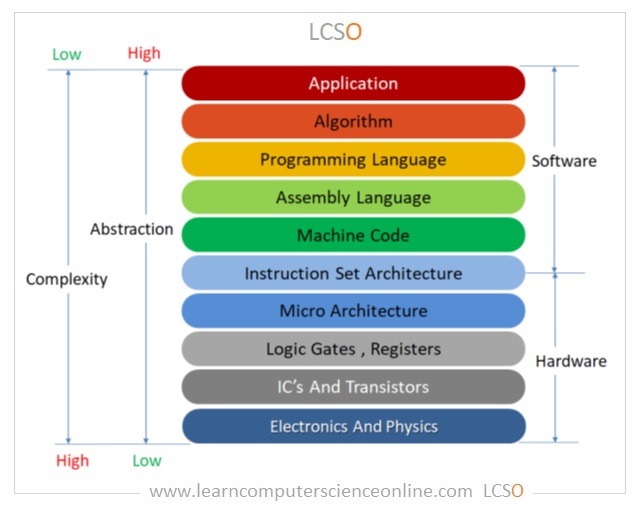
In order to understand the concept of instruction set architecture ( ISA ) , we need to first study some important related topics in computer organization and architecture ( COA ). In this section, we will study some important concepts in computer architecture in the context of instruction set architecture.
These fundamental concepts are program instructions, machine instructions, instruction format, instruction cycle, microarchitecture, CISC and RISC architecture and the implementation of the ISA.
Let us first start with understanding the CPU’s microarchitecture.
CPU Microarchitecture
The term instruction set architecture ( ISA ) is one of the most important topic in computer architecture and organization ( CAO ).
The ISA defines the operational capabilities of the processor to perform various operations. Whereas, the microarchitecture is the actual implementation of the ISA.
The ISA simply specify the set of operations that processor must support. The ISA does not advocate a specific implementation.
Whereas, the CPU’s microarchitecture deals with the manner in which the ISA is implemented into the processor design at the hardware level.
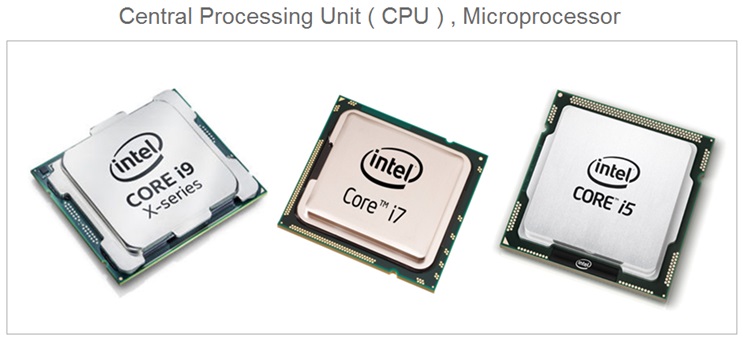
Therefore, it is possible that two processor brands can design the processor based on the same Instruction Set Architecture ( ISA ) but with different implementation in the processor microarchitecture. The CPU performance might differ due to different implementation of the ISA in the microarchitecture.
And therefore, instruction format is an important component of the CPU’s instruction set architecture.
Instruction Set Architecture
CISC And RISC
CISC And RISC Microprocessor Architecture
The CISC and RISC are two main types of instruction sets implemented by the processor microarchitecture. As the applications of the computers evolved, it was felt necessary to expand and developed the ISA that is optimized for a specific platform.
The CISC stands for complex instruction set computers. The CISC instruction set was more complex and contained more instructions as compared to RISC. The RISC stands for reduced instruction set computers. As the name suggest, the RISC architecture uses less number of simplified instructions.
Difference Between CISC And RISC Architecture
CISC Architecture | RISC Architecture |
Emphasis on hardware. | Emphasis on software. |
Needs multiple machine cycles. | Needs single machine cycles. |
Complex and more instructions. | Simplified and less instructions. |
Minimum use of pipelining. | Maximum use of pipelining. |
Maximum use of main memory. | Maximum use of cpu registers. |
Variable format instructions. | Fixed format instructions. |
Offers more addressing modes. | Offers fewer addressing modes. |
Instruction Set Architecture
Pipelined And Non-Pipelined Architecture
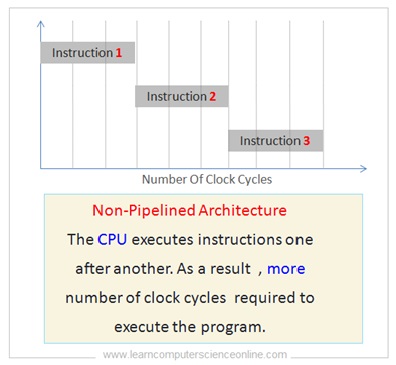
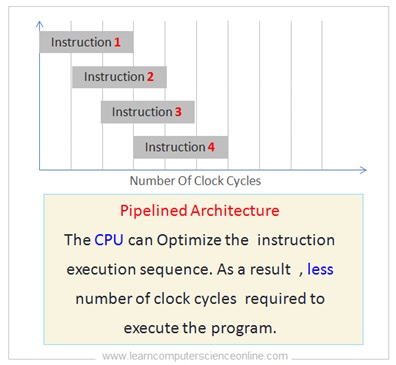
RISC Approach
RISC Microprocessor Architecture
The RISC stands for reduced instruction set computers. The RISC instruction set contains reduced number of simplified instructions. Most microprocessor used in the mobile computing devices are based on the RISC architecture.
The RISC is a type of microarchitecture implemented by the RISC processors that utilize a small number of highly-optimized set of instructions.
The microprocessor based on the RISC architecture are mainly used for the mobile computing devices such as smart phones, tablets, laptops, gaming consoles and other intelligent mobile devices. The RISC architecture is an alternative to CISC based microprocessor. The CISC is much larger set of complex instructions.
The RISC based processors are considered more efficient due to simplified small number of instructions, fixed instruction format, instruction pipelining and these instructions need only one machine cycle to execute.
RISC Architecture
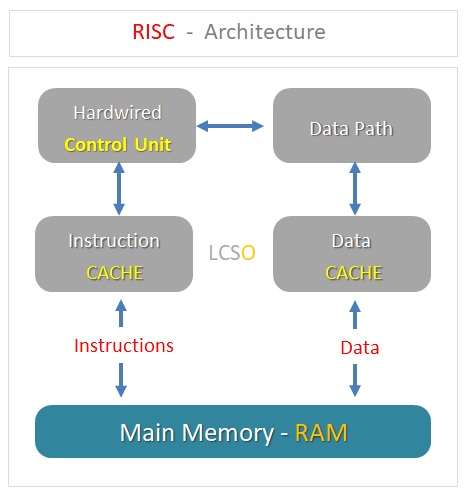
Instruction Set Architecture
CISC Approach
CISC Microprocessor Architecture
The CISC stands for complex instruction set computers. The CISC instruction set contains more number of complex instructions.
The main objective of the CISC architecture is the software reduce the software complexity with increased complexity of the microprocessor architecture.
The CISC processor use variable instruction format ( 16 Bits To 64 Bits ). Further, CISC architecture makes the maximum use of the main memory rather than register.
The primary goal of CISC architecture is to complete a task in few lines of assembly code instructions as possible. This is achieved by building processor hardware that is capable of understanding and executing a series of complex operations. And therefore, the focus is on the hardware.
The CISC based microprocessor more number of complex instructions that need more than one machine cycles to execute. A machine cycle is the basic operation of the CPU and it consist of fetch , decode and execute operations.
CISC Architecture
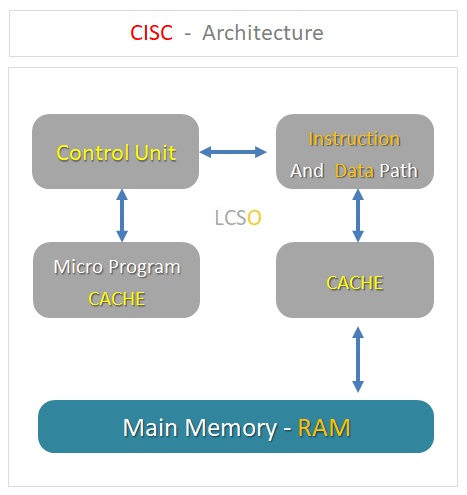
CONCLUSION:
Instruction Set Architecture (ISA) is a set of rules , commands and conventions used by a computer’s hardware to interpret and execute instructions provided by software programs. It serves as an interface between the hardware and software components of a computer system, defining the instruction set that the processor can execute.
The ISA specifies the instructions that a processor can understand, decode in terms of their formats, operations, addressing modes, and encoding schemes. It also defines the registers (a high speed memory in CPU) available to the processor, memory addressing modes, and how data is transferred between memory and registers.
ISA plays a crucial role in determining the capabilities and compatibility of a processor (CPU). Different processor architectures, such as x86, ARM, MIPS, and PowerPC, have their own ISAs tailored to their specific design goals and target applications. Software developers write program code targeting specific ISAs, ensuring compatibility with processors that adhere to those architectures.
Moreover, ISA serves as a foundation for compilers ( software for program compilation) , assemblers, and other software tools that translate high-level programming languages (Example: C, C++, Java, Python) into machine code. It provides the framework for generating efficient code that exploits the capabilities of the underlying hardware while abstracting away its complexities for software developers.
In conclusion, Instruction Set Architecture defines the vocabulary in terms of set of commands and rules that enable communication between software and hardware components, facilitating the execution of programs on a computer system.
Join The Best Seller
Computer Science Online Course
This is the most comprehensive and unique Computer Science And Programming Fundamentals course Online which will give you in depth understanding of most important fundamental concepts in computer science And Programming .






